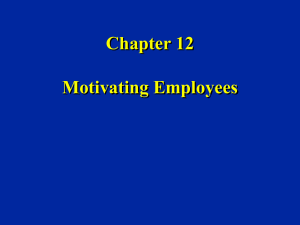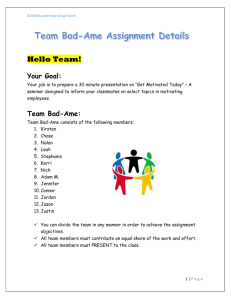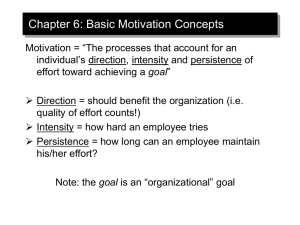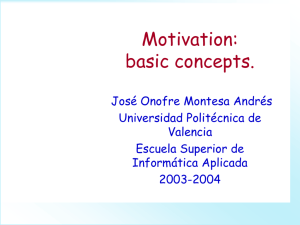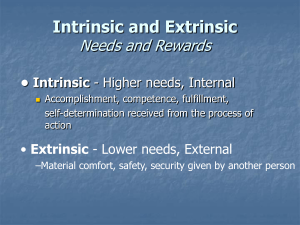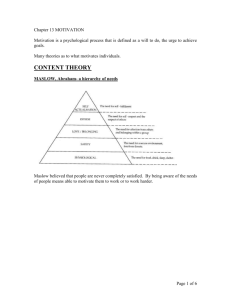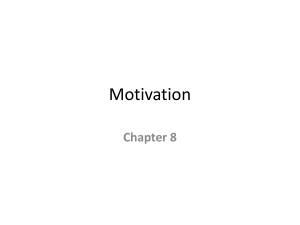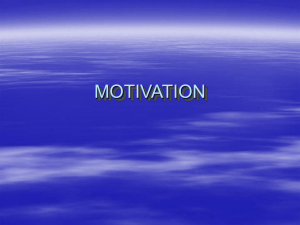LECTURE 6
advertisement
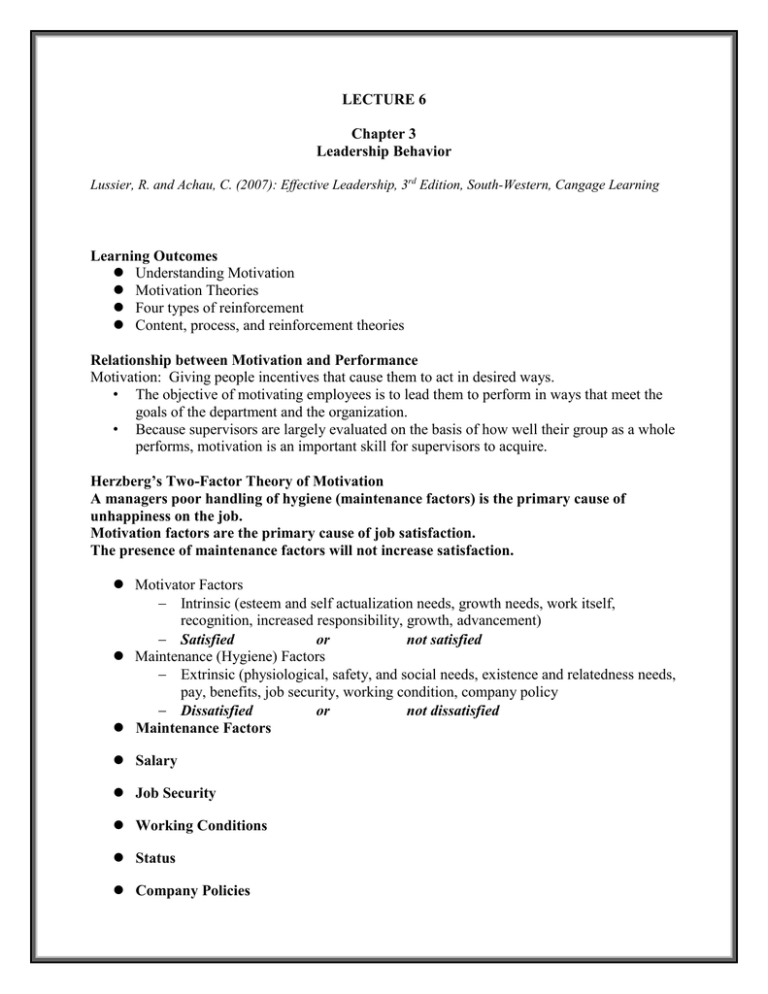
LECTURE 6 Chapter 3 Leadership Behavior Lussier, R. and Achau, C. (2007): Effective Leadership, 3rd Edition, South-Western, Cangage Learning Learning Outcomes Understanding Motivation Motivation Theories Four types of reinforcement Content, process, and reinforcement theories Relationship between Motivation and Performance Motivation: Giving people incentives that cause them to act in desired ways. • The objective of motivating employees is to lead them to perform in ways that meet the goals of the department and the organization. • Because supervisors are largely evaluated on the basis of how well their group as a whole performs, motivation is an important skill for supervisors to acquire. Herzberg’s Two-Factor Theory of Motivation A managers poor handling of hygiene (maintenance factors) is the primary cause of unhappiness on the job. Motivation factors are the primary cause of job satisfaction. The presence of maintenance factors will not increase satisfaction. Motivator Factors Intrinsic (esteem and self actualization needs, growth needs, work itself, recognition, increased responsibility, growth, advancement) Satisfied or not satisfied Maintenance (Hygiene) Factors Extrinsic (physiological, safety, and social needs, existence and relatedness needs, pay, benefits, job security, working condition, company policy Dissatisfied or not dissatisfied Maintenance Factors Salary Job Security Working Conditions Status Company Policies Quality of technical supervision Interpersonal relationships among peers and supervisors Motivational Factors Achievement Recognition Responsibility Advancement The work itself Possibility of Growth IS MONEY MOTIVATOR? Some supervisors and other managers assume that the main thing employees want out of a job is money. While money can be a motivator, it is not the only motivator, and for some people it is not the most important motivator. For money to motivate, it must meet employee needs, and employees must believe they are able to achieve the financial rewards the organization offers. Motivation Theories Process Motivation Theories Focus on how people choose behavior to fulfill their needs 1: Equity Theory 2: Expectancy Theory 3: Goal Setting Theory Equity Theory Propose that employees are motivated when their perceived inputs equal outputs Our inputs (Contribution) Our outcome (Rewards) = = Other’s input (Contribution) Other’s Outcome (Rewards) Expectancy Theory “Proposes that employees are motivated when they believe they can accomplish the task and the rewards for doing so are worth the effort” Goal-setting Theory Proposes that specific, difficult and challenging goals motivate people How Does a Leader Set Meaningful Goals & Objectives to Motivate Subordinates? GOALS SHOULD BE SMART Process Motivation Theories 1: Equity Theory • • • 2:Expectancy Theory • • • People compare their inputs (efforts, experience, status, intelligence) with others (outputs 9prasie, recognition, pay, benefits, promotions etc conclusion=under warded, over rewarded, equitably rewarded Using Equity theory: equity is based on perception, rewards should be equitable, high performance be rewarded but understand what level of input needed to attain output, clarify exact requirements to achieve incentives Based on Victor Vroom’s formula motivation= expectancy (perception of ability to accomplish task or objective) *instrumentality (performance will be rewarded) * valence (value places on outcome and reward0 Assumption: Internal (needs) and external (environment) factors 3: Goal Theory Setting • affect human behavior, people take behavior decision based on perception of outcome (promotion or recognition) • Consult=Set=Support=Review=Feedback Reinforcement Theory Also known as behavior modification Based on studies of B.F. Skinner Major topic of study in Psychology Depends on reinforcement Positive (encourage continued behavior) Avoidance (negative reinforcement) Extinction Punishment Reinforcement can be Continuous Intermittent (fixed interval schedule, fixed ration schedule, variable ratio schedule) Stimulus (legal speed limit) • • • • • • • • • Responding behavior (speed) Consequences of behavior (fine to discourage repeat performance or behavior) Set clear objectives Employees must understand what is expected Use appropriate rewards Must be seen as rewards Use the appropriate reinforcement schedule Do not reward unworthy performance Look for the positive Give sincere praise Do things for your employees Motivation Process with the Motivation Theories 1.Need (unmet need or want to be Satisfied at work) Content Motivation Theories 2. Motive (selecting behavior to Satisfy need) Process Motivation Theories 4. Consequence (manger behavior or natural outcome of employee action Reinforcement theory 3. Behavior (employee action to satisfy need) 5. Satisfaction and dissatisfaction Degree and how long need is met Men’s and Women’s Leadership Styles • • • • • • • In general, women follow democratic leadership style Encourage participation Share power and information Attempt to enhance followers’ self-worth Prefer to lead through inclusion Men feel more comfortable with a directive style Rely on formal authority Source: Lussier, R. and Achau, C. (2007): Effective Leadership, 3rd Edition, South-Western, Cangage Learning

